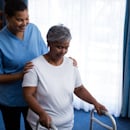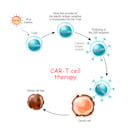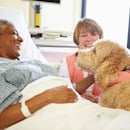
Stroke Scale: A Useful Tool for Nurses
Every second counts when a stroke victim first presents to the hospital. Are you familiar with the National Institute of Health’s (NIH) Stroke Scale? Nurses are often the first contact a stroke victim has on arrival at a healthcare facility. Quick and effective evaluation of presenting signs and symptoms can make an enormous difference in patient outcomes. A focal neurological exam to evaluate vision, movement, sensation and language is vital to preserving function and minimizing devastating side effects of cardiovascular accidents (National Institute of Neurological Disorders and Stroke [NINDS], 2011). Acute stroke treatments need to be rapidly implemented, and it is critical that the nurse be able to assess patients and relay the information accurately and efficiently to other members of the health care team.
The National Institutes of Health Stroke Scale (NIHSS) is a systematic assessment tool designed to measure the neurologic deficits most often seen with acute stroke patients. Originally designed as a research tool, it is a nonlinear ordinal scale, with possible scores ranging from 0-42. The scale requires approximately 5-8 minutes to perform. Use of the NIHSS includes documentation of neurologic status and outcome, data collection for planning safe nursing care and standardization of information exchanges between nurse caregivers and other health care professionals (NINDS, 2011).
How a stroke scale works
In line with the American Heart Association guidelines, the Emergency Department Panel has identified several necessary tests to confirm the type, location and extent of a stroke. A complete blood cell count with differential and platelet count; electrolytes, BUN, creatinine, coagulation profile; chest radiograph; and electrocardiogram are all recommended as part of the baseline assessment. It is critical that certain tests be obtained in a timely manner.
An effective hospital stroke response system should be efficient, high-quality and cost effective. Some key factors in establishing an effective system include stressing the need for early recognition of eligible patients, early consideration for stroke team activation, and establishing standing orders for patients with stroke (NINDS, 2011).
Certain standing orders that should be utilized relate to serial vital sign monitoring, oxygen saturation monitoring and rapid glucose assessment. Highly recommended are neurological monitoring with a scale similar to the NIH Stroke Scale, and constant cardiac monitoring for all stroke patients. Intravenous access should be established as quickly as possible -- for all stroke patients. In addition, a physician should evaluate a stroke patient within 10 minutes of their arrival at the ED doors (NINDS, 2011). Depending on the established protocol, this may be accomplished by activating a stroke team.
According to the NINDS, 2011, in the case of ischemic stroke, treatment should be initiated within 60 minutes, and the time from patient arrival at the ED to placement in a monitored bed should not exceed three hours.
To learn more about stroke management, or to update your current knowledge, visit lms.rn.com and check out our course on Stroke Prevention and Recognition. This two contact hour course identifies ways in which healthcare professionals can recognize the early warning signs of stroke, and prevent the occurrence of stroke through education. The course reviews primary and secondary stroke prevention tools that healthcare professionals can use to modify risk factors for stroke.
References:
- National Institute of Neurological Disorders and Stroke [NINDS], (2011). : Stroke Proceedings: Emergency Department. Retrieved from: http://www.ninds.nih.gov/news_and_events/proceedings/stroke_proceedings/koroshtz.htm
- Spilker J, Kongable G, Barch C, Braimah J, Brattina P, Daley S, Donnarumma R, Rapp K, Sailor S. (1997). Using the NIH Stroke Scale to assess stroke patients. The NINDS rt-PA Stroke Study Group. National Institute of Health [NH]. J Neurosci Nurs. 1997 Dec;29(6):384-92. Retrieved online from: http://www.ncbi.nlm.nih.gov/pubmed/9479660
© 2015 AMN Healthcare, Inc. All Rights Reserved.




